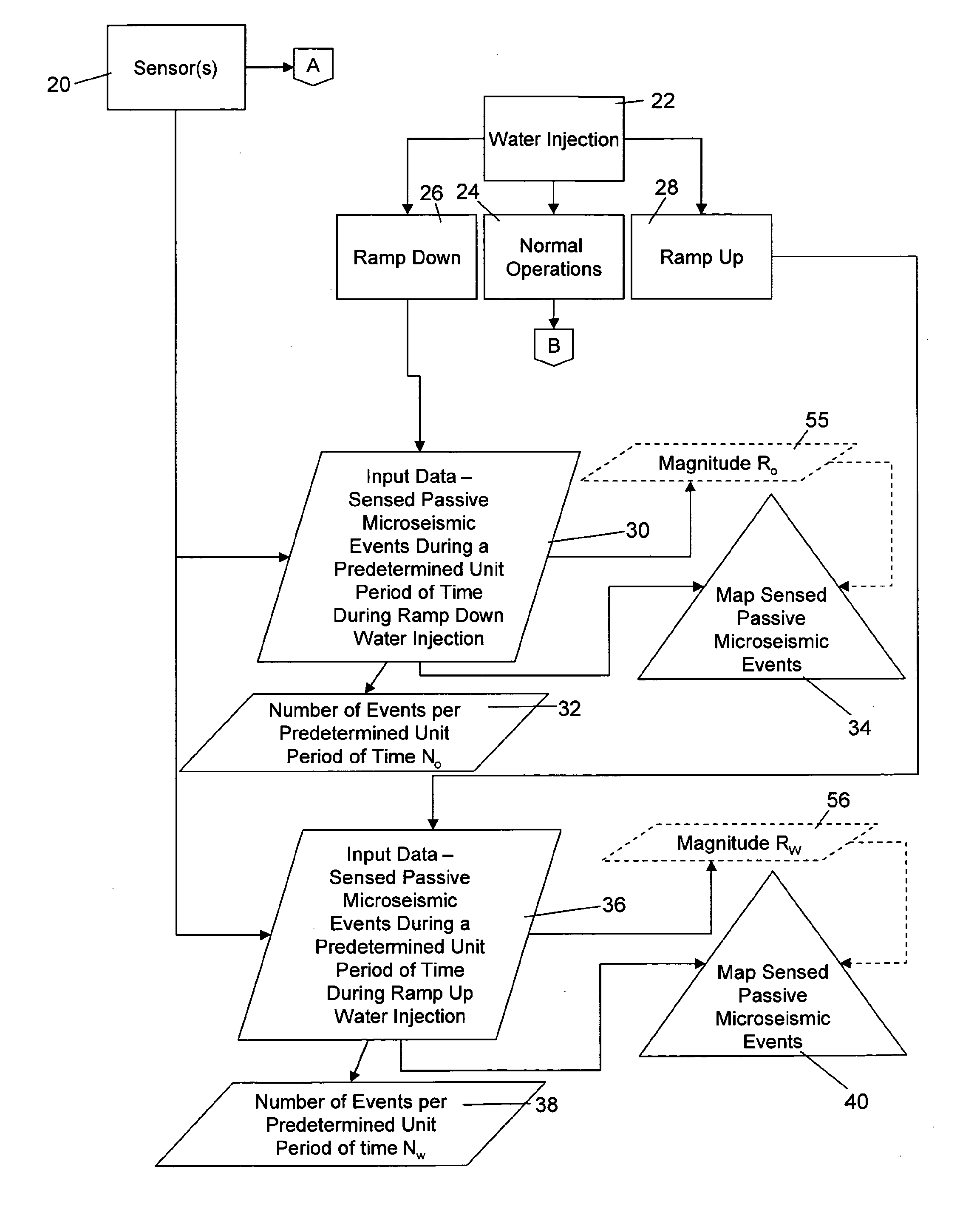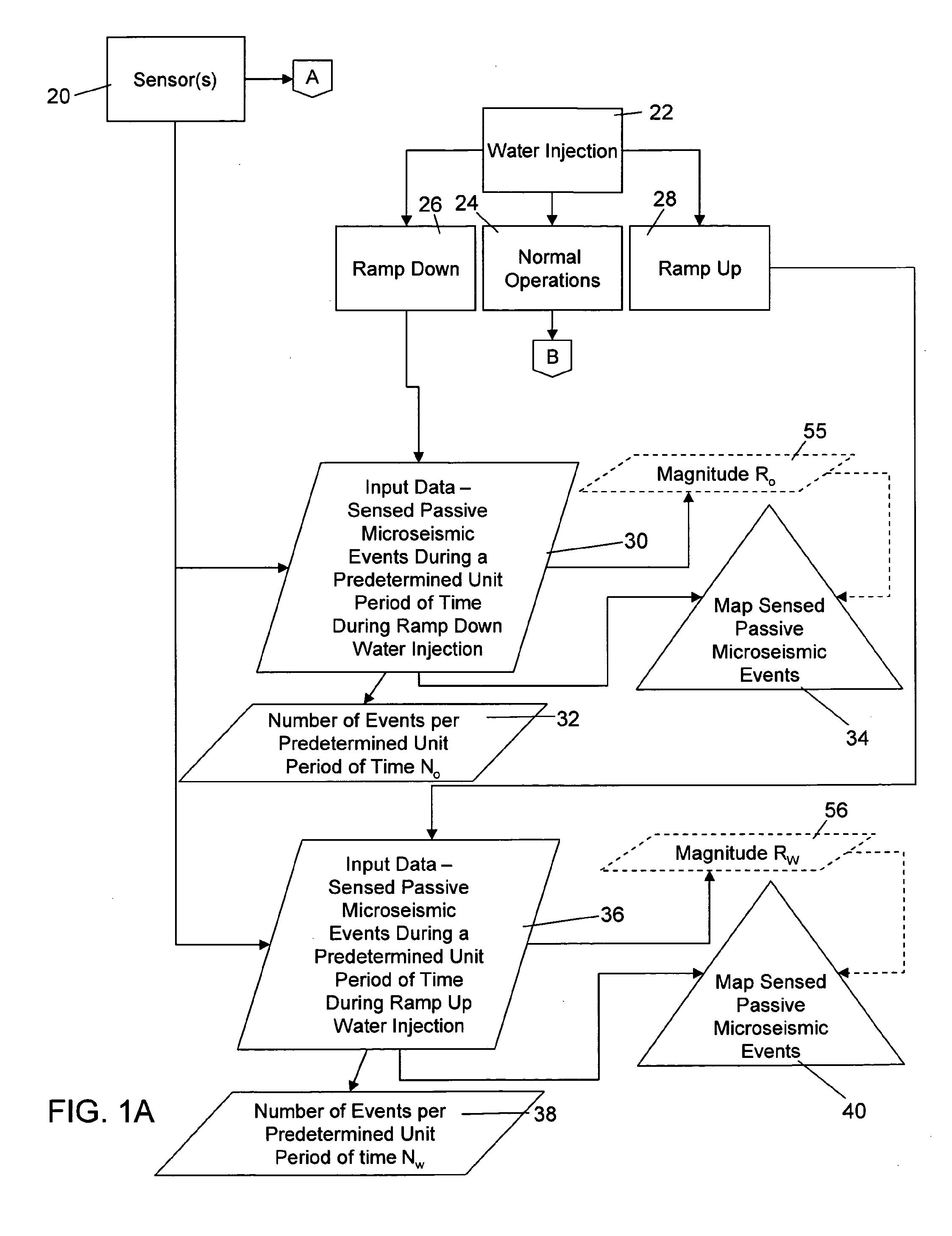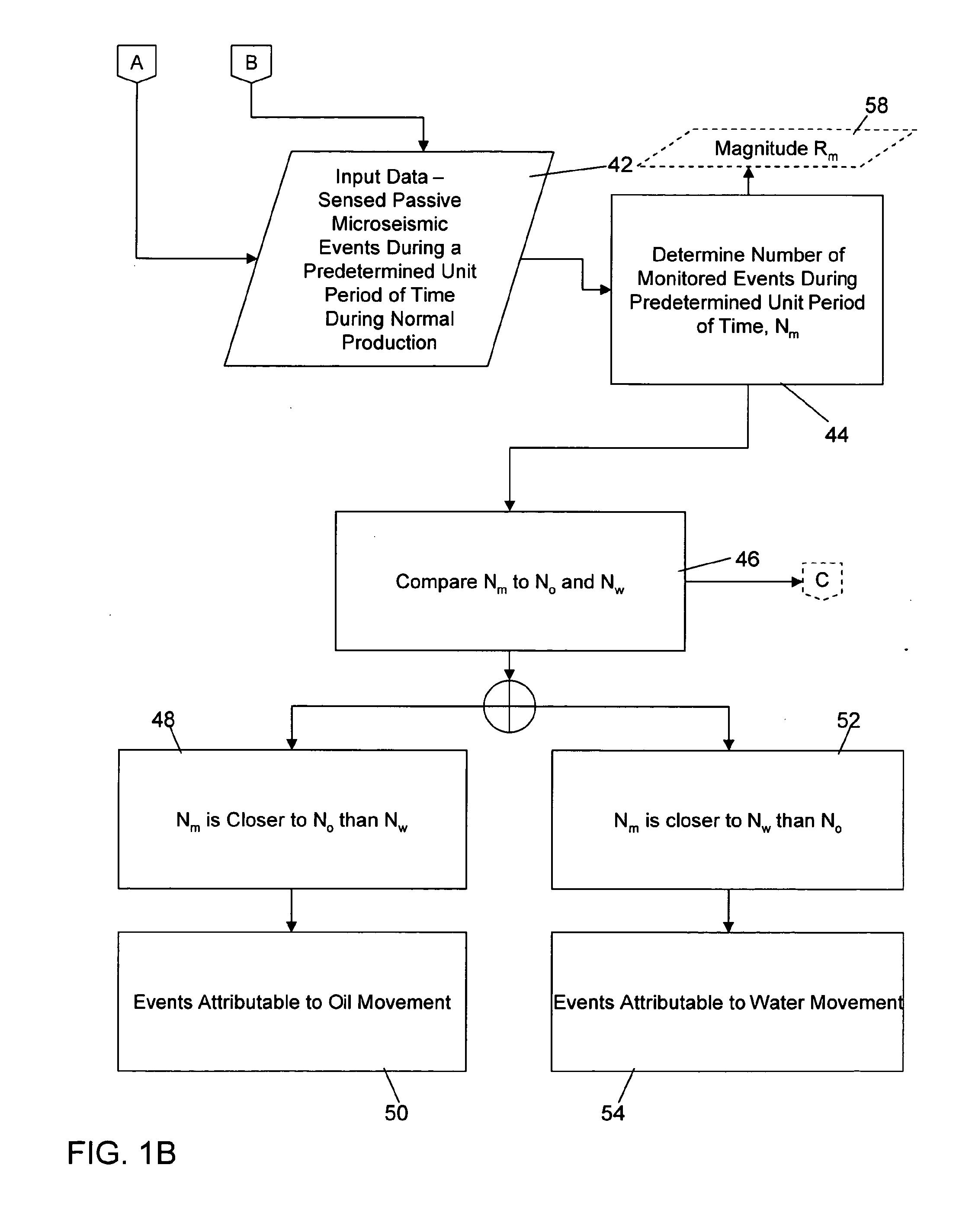Monitoring of reservoir fluid moving along flow pathways in a producing oil field using passive seismic emissions
a technology of seismic emission and reservoir fluid, which is applied in seismology for waterlogging, borehole/well accessories, instruments, etc., can solve the problems of elastic rock failure of reservoir rock matrix, increase in shear stress in reservoir rocks, and inability to observe the flow path of reservoir fluid, etc., to achieve optimum reservoir management, improve oil production, and reduce the effect of gas-to-oil ratio
- Summary
- Abstract
- Description
- Claims
- Application Information
AI Technical Summary
Benefits of technology
Problems solved by technology
Method used
Image
Examples
Embodiment Construction
[0043]This invention is particularly useful in a producing reservoir to continuously define the map of preferential fluid movement directions (pathways) and also to identify the type of fluid moving along these preferential pathways. The flow pathways and the fluid phase moving along these pathways between wells cannot be measured easily using conventional measurements in drilled wells. The method and system of the present invention provides the orientation and distribution of preferential fluid pathways and identifies the fluid phase, differentiating between oil or water moving along the pathways. The mapping of fluid pathways and the identification of the type of fluid is useful to optimize fluid injection and production operations and improving overall oil recovery. During monitoring, the detected passive seismic emissions, in certain embodiments recorded and analyzed in real time, can define fluid flow pathways between the wells in a producing field. The water flood-front moveme...
PUM
 Login to View More
Login to View More Abstract
Description
Claims
Application Information
 Login to View More
Login to View More - R&D
- Intellectual Property
- Life Sciences
- Materials
- Tech Scout
- Unparalleled Data Quality
- Higher Quality Content
- 60% Fewer Hallucinations
Browse by: Latest US Patents, China's latest patents, Technical Efficacy Thesaurus, Application Domain, Technology Topic, Popular Technical Reports.
© 2025 PatSnap. All rights reserved.Legal|Privacy policy|Modern Slavery Act Transparency Statement|Sitemap|About US| Contact US: help@patsnap.com



